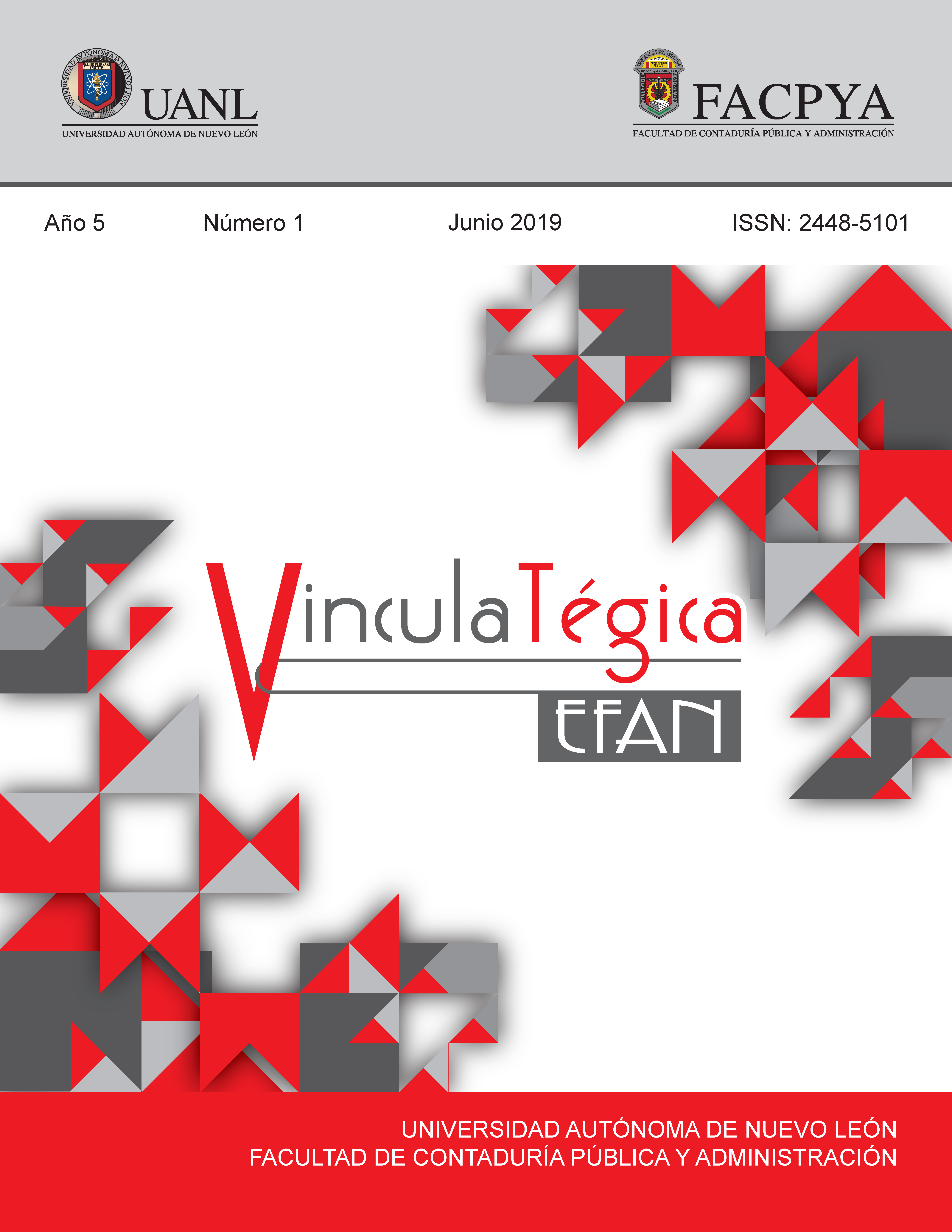Capacidades dinámicas en las mipymes para la adaptabilidad de la industria 4.0
DOI:
https://doi.org/10.29105/vtga5.1-836Palabras clave:
industria 4.0, internet de las cosas, computación en la nube, manufactura aditiva.Resumen
Las pymes enfrentan un gran desafío con la cuarta revo- lución industrial pues están en camino al desarrollo de estrategias de producción y mejorar sus procesos, a esto se suma la búsqueda de talento del capital humano. El de- safío también corresponde a la educación en ingeniería, se requiere fortalecer y desarrollar competencias digita- les en los estudiantes, para hacer frente a los cambios tec- nológicos de la industria 4.0. La presente investigación aborda las necesidades digitales en las pymes para tradu- cirlas en capacidades educativas requeridas de los futuros egresados de ingenierías que podrán ayudar a la forma- ción de ingenieros 4.0 capaces de abordar esta revolución industrial ya que los requisitos serán más complejos y específicos. El avance tecnológico y el crecimiento de in- versión en nuestro país reafirman la idea de que se necesi- tan desarrollar capacidades digitales como computación de la nube, internet de las cosas y manufactura aditiva para satisfacer la futura demanda de la industria
Descargas
Citas
Gobierno del Estado de Nuevo León. (05 de Marzo de 2018). http://www.nl.gob.mx. Recuperado de http://www.nl.gob.mx: http://www.nl.gob.mx/noticias/impulsara-nuevo-leon-50-empresas-de- software-hacia-industria-40
Gobierno del Estado de Nuevo León. (16 de Febrero de 2018). http://www.nl.gob.mx. Recuperado de http://www.nl.gob.mx: http://www.nl.gob.mx/noticias/tendra-nuevo-leon-primer-campus-de- diseno-en-manufactura-digital-en-latinoamerica
Alliance, B. T. (6 de Marzo de 2018). México mejora su posición en los rankings del BSA Global Cloud Computing Scorecard 2018. Recuperado de BSA | The Software Alliance: https://www.bsa.org/news-and-events/news/2018/march/en03062018bsa2018cloudscorecard
Armbrust, M., Fox, A., Rean, G., Joseph, A., Katz, R., & Andy, K. (2010). A view of Cloud Computing . Communication of the ACM, 50-58 . DOI: https://doi.org/10.1145/1721654.1721672
Atzori, L., Lera, A., & Morabito, G. (2010). The Internet of Things: A survey. Computer Networks, 2787- 2805. DOI: https://doi.org/10.1016/j.comnet.2010.05.010
Becerra, J. L. (2017). Reporte Especial – Internet de las Cosas en México: avances y expectativas. Recuperado de CIO México : http://cio.com.mx/reporte-especial-internet-las-cosas-en-mexico- avances-expectativas/
Birgit, V.-H., & Hess, D. (2016). IEEE Transactions on Automation Science and Engineering . Munich : Guest editorial .
Bong, K. D., & Witherell, P. L. (2015). Streamlining the additive manufacturing digital spectrum: A systems approach. Additive Manufacturing , 20-30. DOI: https://doi.org/10.1016/j.addma.2014.10.004
Ella, b. (2016). Information age. Recuperado de The digital age and the chening role ot the modern enginner: https://www.information-age.com/digital-age-changing-role-modern-engineer- 123462717/
Esponda, J. (2018). La educación superios y la cuarta revolución industrial. El universal. Forbes. (31 de 01 de 2018).
Forbes México. Recuperado de Pymes mexicanas, un panorama 2018: https://www.forbes.com.mx/pymes-mexicanas-un-panorama-para-2018/
Gibson, I., Rosen, D. R., & Stucker, B. (2010). Design for Additive Manufacturing. Additive Mnufacturing Technologies Springer, Boston. DOI: https://doi.org/10.1007/978-1-4419-1120-9
Gobierno del Estado de Nuevo León. (2017). http://www.nl.gob.mx. Recuperado de http://www.nl.gob.mx: http://www.nl.gob.mx/noticias/arranca-nl-instalacion-de-aulas- inteligentes-para-la-manufactura-40
Gobierno del Estado de Nuevo León. (2017). http://www.nl.gob.mx. Recuperado de http://www.nl.gob.mx: http://www.nl.gob.mx/noticias/firman-convenio-de-capacitacion-el-icet-y- la-prepa-23-de-la-uanl
Gupta, P., A, S., & Raj, J. R. (2013). The use and adoption of cloud computing by small and mediums. International Journal of information mangement , 861-874. DOI: https://doi.org/10.1016/j.ijinfomgt.2013.07.001
Gutowsk, T., Branham, M. D., & Jones, A. J. (2009). Thermodynamic Analysis of Resources Used in Manufacturing Processes. Environ. Sci. Technol, 215-243. DOI: https://doi.org/10.1021/es8016655
Industrial Internet Insignts Report . (2015). Accenture.
INEGI. (2015). INEGI. Recuperado de Encuesta Nacional sobre Productividad y Competitividad de las Micro, Pequeñas y Medianas Empresas (ENAPROCE): https://www.inegi.org.mx/programas/enaproce/2015/
Jain, L., & Sushul, B. (2010). Enterprise cloud computing: key considerations for adoption. International Journal of Engineering and Infornation Technology, 113-117.
Katasonov, A., Olena, K., khriyenko, O., & Nikitin, S. (2008). Smart semantic middleware for the internet of things. Proceedings of Fifth International Conference on Informatics in Control, Automation and Robotics, Funchal, Madeira, Portugal.
Khong, S. T., Siong, C. C., & Binshan, L. (2009). Internet-based ICT adoption: evidence from Malaysian SMEs. Industrial Management & Data Systems, 224-244. 68 DOI: https://doi.org/10.1108/02635570910930118
Mell, P., & Timothy, G. (2011). The NIST Definition of Cloud. National Institute of Standards and Technology, 2. DOI: https://doi.org/10.6028/NIST.SP.800-145
Nuevo León 4.0 muestra el futuro de la era digital. (2018). Manufactura.
Rabeh, M., Husam, A., & Mosa, S. (2017). La cuarta revolución industrial: una prespectiva de innovación social. Tecnología revision de la iglesia de la innovación, 12-20 .
Riquelme, R. (2 2018). La mitad de las empresas en México están haciendo inversiones en la nube. Recuperado de El economista: https://www.eleconomista.com.mx
Rivera, R. G. (2017). Firman convenio de capacitación el ICET y la Prepa 23 de la UANL. (G. Ciudadano, entrevistador)
Schwab, K. (2015). Foreign Affairs. Recuperado de The Fourth Industrial Revolution: What It means and how to respond: https://www.foreignaffairs.com/articles/2015-12-12/fourth-industrial-revolution
Sallehudin, H., Che Razak, R., & Ismail, M. (2015). Factors Influencing Cloud Computing. Journal of Entrepreneurship and Business, 30-45. DOI: https://doi.org/10.17687/JEB.0301.03
Selim, E., Andreas, J., Philipp, H., Ott, K., & Wilfred, S. (2016). Tangible Industry 4.0: a scenario-based approach to learning for the future of production. 6th CLF-6th CIRP Conference on Learning Factories, Procedia CIRP, 13-18. DOI: https://doi.org/10.1016/j.procir.2016.03.162
Serrano, M., Elloumi, O., & Lucent, F. M. (2015). Alliance for internet of things innovation, Semantic Interoperability. Release 2.0 AIOTI WG03-IoT Standardisation.
Shin, D.-I. (2017). An exploratory study of innovation strategies of the internet of things SMEs in South Korea. Asia Pacific Journal of Innovation, 171-189. DOI: https://doi.org/10.1108/APJIE-08-2017-025
Suárez, D. (31 de 05 de 2016). Ningenia. Recuperado de ¿Qué es la industria 4.0?: http://www.ningenia.com/2016/05/31/que-es-la-industria-4-0/
Vermesan, O. (2014). Internet of Things-From Research and Innovation to Market Deployment. River Publishers.
Whitmore, A., & Agarwal, A. (2014). The Internet of Things—A survey of topics and trends. Journal of Research and Innovation, 261-274. DOI: https://doi.org/10.1007/s10796-014-9489-2
Yueting, C., Chunyan, M., Sun, B., & Yongqing, C. (2017). Crowd science and engineering: concept and research framework. International Journal of Crowd Science , 2-8. DOI: https://doi.org/10.1108/IJCS-01-2017-0004
Descargas
Publicado
Cómo citar
Número
Sección
Licencia

Esta obra está bajo una licencia internacional Creative Commons Atribución 4.0.
Los autores que publiquen en la revista VinculaTégica EFAN aceptan el siguiente aviso de derechos de autor:
a). Los autores conservan los derechos de autor y ceden a la revista el derecho de la primera publicación de la obra bajo una licencia de atribución de Creative Commons. Esta licencia permite a otros compartir la obra siempre que se reconozca la autoría original y la publicación inicial en esta revista.
b). Los autores pueden establecer acuerdos contractuales adicionales de manera independiente para la distribución no exclusiva de la versión publicada en la revista (por ejemplo, publicarla en un repositorio o incluirla en un libro), siempre que se reconozca la publicación inicial en esta revista.
c). Se permite a los autores autoarchivar su trabajo en repositorios institucionales o en su propio sitio web antes y durante el proceso de envío, ya que esto puede fomentar intercambios productivos y aumentar la citación temprana y general del trabajo publicado.







